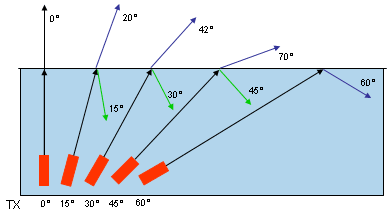Glossary
Total Internal Reflection
Total internal Reflection is an optical phenomenon that occurs when a Ray of Light strikes a medium boundary at an angle larger than the Critical Angle with respect to the normal to the surface. IF the Refractive Index is lower on the other side of the boundary no light can pass through, SO effectively all of the light is reflected. The critical angle is the Angle of Incidence above which the total internal reflection occurs.
When light crosses a boundary between materials with different refractive indices, the light beam will be partially refracted at the boundary surface, and partially reflected. However, if the angle of incidence is greater (i.e. the ray is closer to being parallel to the boundary) than the critical angle--the angle of incidence at which light is refracted such that it travels along the boundary--then the light will stop crossing the boundary altogether and instead totally reflect back internally. This can only occur where light travels from a medium with a higher Refractive Index to one with a lower refractive index. For example, it will occur when passing from Glass to air, but not when passing from air to glass.
Light reflects away from the lower Index of Refraction material (air) and continues to bounce down the object.
Learn more about back reflection and optical return loss.

